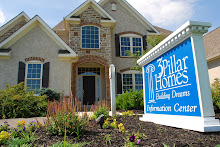While gas prices have jumped over the $4 level and consumers have become aware of "green building" advantages, solar energy for residential use has emerged from the shadows.
Professional builders interested in meeting the concerns of energy-conscious homebuyers are taking a new look at solar energy systems, primarily photovoltaic or PV systems. PV panels, usually mounted on rooftops, convert the sun's energy directly to usable electricity. PV systems can reduce an owner's dependence on power from the local utility while supporting conservation and environmental issues.
PV systems have come a long ways since they first became known in the energy-conscious 70s. For example, although solar generation is more efficient in some areas of the country than others, a smart builder and solar expert can design and install an effective system anywhere to reap the benefits of the sun's infinite energy. Geography is not a limitation.
The quality of PV panels has also greatly improved over the last four decades. So-called built-in panels blend with a variety of roof finishes, including shingles and concrete tiles, replacing big, unsightly metal frames. PV panels are now far more efficient, so that smaller panels generate more power. Better aesthetics combined with better function result in systems more acceptable to builders, design professionals and homeowners.
Even with improved efficiency, however, the goal of PV design has shifted from entirely replacing the local utility to partially replacing its power supply to the home. Most residential PV systems installed in the last few years deliver 60-80% of the home's electrical requirements. The change in design objective lowers the initial cost of the system while delivering a reasonable return on that investment by reducing the homeowner's monthly power bill.
In fact, supplemental PV systems often generate more electricity during the height of a summer day than the typical house uses. This is especially true of homes built to high-performance standards. As a result, and because the house is still tied to the power grid, the excess electricity is metered and sent back to the utility where it is credited to the homeowner. (See Sidebar '101') When the owner again needs to draw from the power grid, his accumulated credits are used before he is charged for "new" electricity.
It is important to note that PV power generation -- and its sister technology, solar thermal heating for domestic water -- is not a green solution for an old or inefficient building. A PV or solar thermal system reaches its full potential only when the house is designed and built to a high-performance standard. Such features as a thermally tight building shell, above-average levels of insulation, energy-efficient appliances and heating/cooling equipment, and controlled ventilation all work in concert with solar energy systems to efficiently lower the home's energy demand.
Improved technology has brought solar power systems into renewed favor with homeowners and builders. In combination with high performance or green-building practices, supplemental PV and solar thermal systems can be an effective hedge against rising home energy costs.
skip to main |
skip to sidebar
We are a new home builder offering custom home plans to meet your lifestyle and budget. Whether you are in the market for a new, semi custom or custom home, we can help you achieve your dream.
3 Pillar Homes
5710 Delano Ave
Lewis Center, OH 43035
(740) 548-8599




